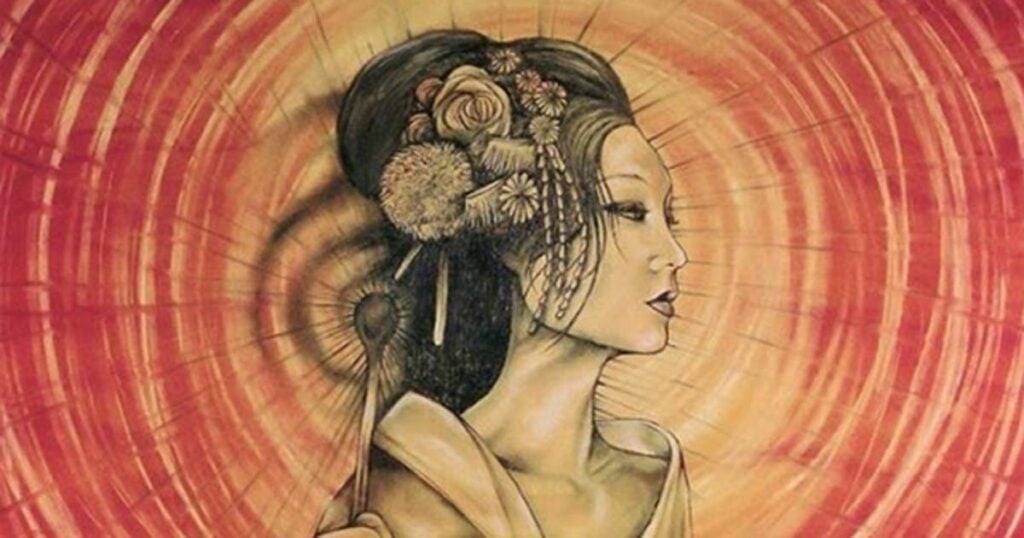Japanese mythology is a collection of traditional folktales and beliefs, especially those belonging to a particular religious or cultural tradition. Shinto and Buddhist traditions are the cornerstones of this particular mythology. But have you heard of Amaterasu, the sun goddess who locked herself in a cave?
In Japanese mythology, the sun goddess once locked herself in a cave because another god was being a jerk to her, only to be enticed and lured out by another goddess dancing topless on a table.
The Birth of Amaterasu
The islands of Japan are created by the god Izanagi and the goddess Izanami. Izanami then gives birth to a slew of deities representing natural phenomena such as the sea, mountains, grass, wind, ships, and food. However, while giving birth to the fire deity Kagutsuchi, she burns her genitals and dies due to her injuries. Izanagi, bereaved and alone, seeks her out in Yomi, the realm of the dead. Izanami warns him not to look at her, but he ignores her advice and discovers that she has become a rotting corpse covered in maggots.
Izanagi flees Yomi in terror, shaking off several pursuers. When he returns to our world, Ashihara no Nakatsukuni, he ritually cleanses himself at the Tachibana River mouth in Himuka.
Three deities appear as he washes his face: the sun goddess Amaterasu when he pours water on his left eye, the moon god Tsukuyomi when he pours water on his right eye, and Susanoo when he pours water on his nose. These three are regarded as Izanagi’s most significant offspring. (Source: Nippon)
Amaterasu Omikami
The sun goddess Amaterasu Omikami or the great divinity illuminating heaven is the most significant Shinto deity and ruler of Takama no Hara or the High Celestial Plain, the realm of the kami or spirits. The goddess is honored at Japan’s most important Shinto temple, the Ise Grand Shrine or Jingu. (Source: World History)
Why Did Amaterasu Lock Herself in a Cave?
The most famous myth about Amaterasu is that she locked herself in a cave after an argument with Susanoo, who surprised her with a monstrous flayed horse while she was quietly weaving in her palace with her younger sister Waka-hiru-me. As a result of Amaterasu’s disappearance, the world fell into complete darkness, and evil spirits rampaged across the land. The gods tried everything to persuade the irritated goddess to leave the cave. On the advice of Omohi-Kane, cocks were placed outside the cave in the hope that their crows would fool the goddess into thinking dawn had arrived.
The gods also planted a large Sakaki tree near the cave entrance and lavishly decorated it with sparkling jewels, fine white clothing, and a mirror in the center. Furthermore, the goddess Amenouzume danced so wildly in a striptease routine that the other gods’ raucous laughter finally piqued Amaterasu’s interest.
The strong god Ame-no-tajikara-wo yanked the goddess out of the cave entrance after opening the blocked cave just enough to see what was going on while distracted by her stunning reflection in the mirror.
Tuto-Tamu then held a pole of plaited straw behind the goddess and declared emphatically that the goddess could no longer hide and that the world was once again bathed in her radiant sunlight. (Source: World History)
